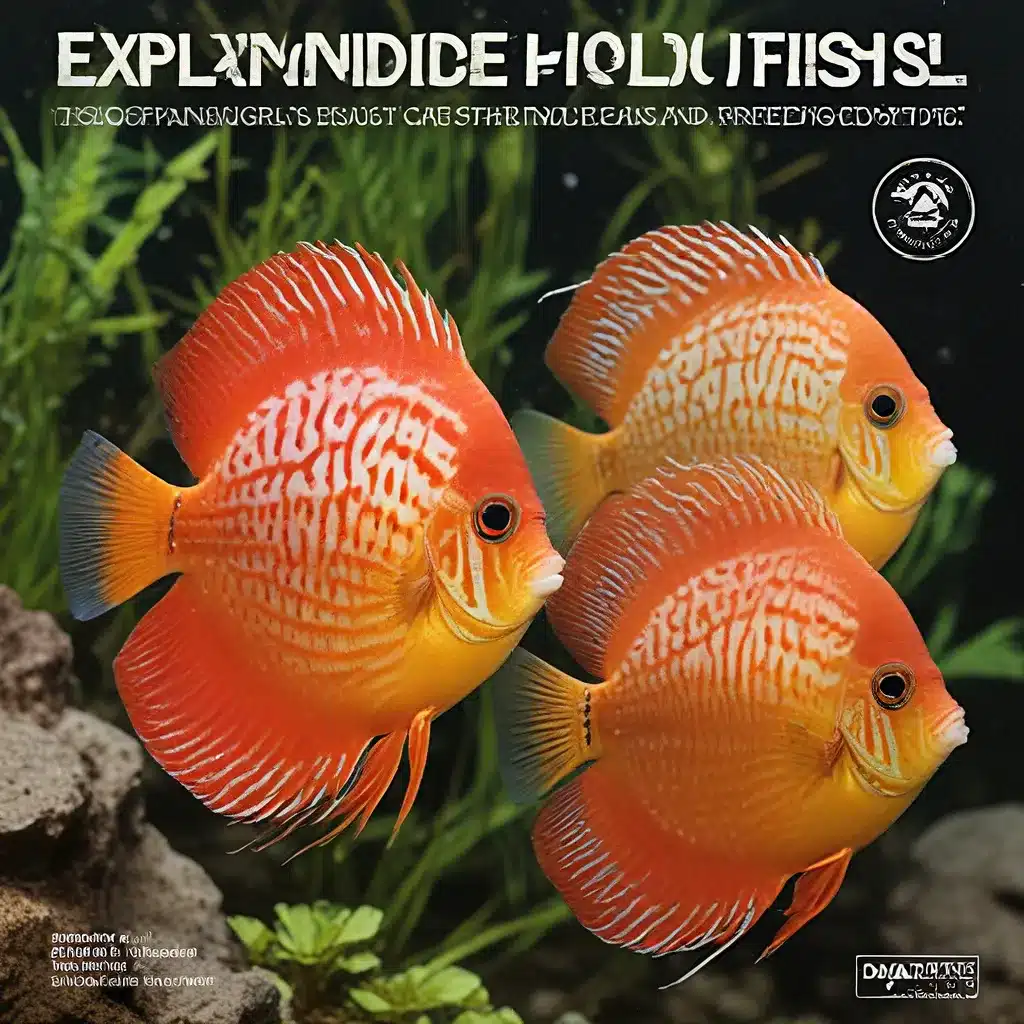
Understanding the Unique Needs of Discus Fish
Discus fish, members of the genus Symphysodon, are widely regarded as one of the most captivating and challenging aquarium species. Their striking disc-like bodies, vibrant colors, and gentle demeanor have made them a coveted prize for dedicated hobbyists. However, the successful long-term care and breeding of these remarkable fish requires a deep understanding of their specific needs and environmental preferences.
One of the defining traits of discus is their sensitivity to water parameters. These fish thrive in soft, acidic waters with a pH ranging from 6.0 to 7.0 and a temperature between 82°F and 86°F. Maintaining stable water conditions is crucial, as discus are susceptible to stress and disease when exposed to fluctuations. Hobbyists must carefully monitor and adjust parameters such as ammonia, nitrites, and nitrates to ensure the optimal well-being of their discus.
In addition to water quality, the aquarium size and decor play a vital role in the success of a discus setup. Discus are social fish and thrive in groups, so a minimum tank size of 55 gallons is recommended for a small school. The aquascape should provide ample hiding spots, such as dense plant growth and driftwood, to allow the fish to feel secure and display their natural behaviors.
Feeding and Nutrition for Discus Fish
Proper feeding is another critical aspect of discus care. These fish are primarily omnivorous, with a diet consisting of a variety of live, frozen, and prepared foods. Typical food items include brine shrimp, bloodworms, daphnia, and high-quality flakes or pellets specifically formulated for discus. It’s important to offer a varied diet, as discus are known to be somewhat picky eaters.
Feeding frequency is also crucial, with most experts recommending multiple small meals per day rather than a single large feeding. This approach helps to mimic the discus’ natural foraging behavior and reduces the risk of overfeeding, which can lead to water quality issues and health problems. Carefully monitoring the fish’s appetite and adjusting food portions accordingly is essential for maintaining their overall well-being.
Breeding and Raising Discus Fry
One of the most rewarding aspects of keeping discus is the opportunity to witness their captivating breeding behaviors and raise the resulting fry. Discus are highly maternal fish, with the female and male working together to care for their offspring. The breeding process typically involves the parents diligently tending to the eggs and protecting the fry until they are able to swim and feed independently.
Successful discus breeding requires a dedicated setup with specific water parameters, including soft, acidic water and a temperature of 84°F to 88°F. The addition of peat moss or Indian almond leaves can help to create the desired tannin-rich environment. Hobbyists should also provide ample hiding spaces and broad-leaved plants for the parents to lay their eggs and shield the fry.
Raising discus fry can be a delicate and labor-intensive process, as the young fish have unique nutritional needs and are highly susceptible to water quality issues. Feeding a variety of live foods, such as micro-worms, brine shrimp, and finely chopped flakes, is essential for their growth and development. Maintaining pristine water conditions through frequent water changes and meticulous tank maintenance is also crucial to ensure the survival and health of the fry.
Designing an Optimal Discus Aquarium
Creating an aesthetically pleasing and functional discus aquarium requires careful planning and consideration. The choice of filtration system is crucial, as discus are sensitive to waste buildup and require robust mechanical and biological filtration. Canister filters or a combination of hang-on-back and sponge filters are often recommended to provide the necessary water movement and mechanical filtration while maintaining the desired soft, acidic water conditions.
Lighting is another important factor, as discus thrive in moderately lit environments. Avoid overly bright lighting, which can stress the fish and inhibit their natural coloration. Subdued, warm-toned lighting complemented by natural-looking decor, such as driftwood and lush plantscapes, can create a visually stunning and serene display.
When it comes to aquascaping, discus enthusiasts often favor a natural, biotope-inspired approach. Incorporating dense plant growth, strategically placed rocks and driftwood, and a soft substrate can help to recreate the fish’s preferred habitat and provide the necessary hiding spots and visual interest.
Conclusion
Keeping and breeding discus fish requires a deep understanding of their unique needs and a commitment to providing the optimal environmental conditions. By mastering the art of water parameter management, tailored feeding regimes, and thoughtful aquarium design, hobbyists can unlock the secrets to successfully maintaining and propagating these mesmerizing aquatic wonders. Exploring the fascinating world of discus fish is a rewarding journey that can bring unparalleled joy and a sense of accomplishment to the dedicated aquarist. For those willing to take on the challenge, the King Aquarium community offers a wealth of resources and support to guide you through the diverse and captivating realm of discus fish care and breeding.

